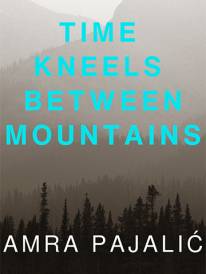BlacKkKlansman
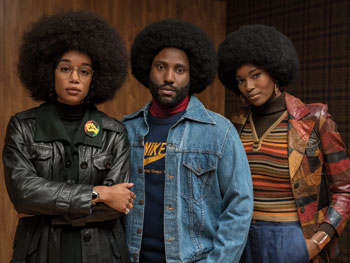
A Spike Lee Joint
Cast: Adam Driver, Topher Grace, Ryan Eggold, John David Washington, Laura Harrier
Director: Spike Lee
Genre: Biography, Crime
Rated: MA
Running Time: 136 minutes
Synopsis: From visionary filmmaker Spike Lee comes the incredible true story of an American hero.
It's the 1970's, a time of great social upheaval as the struggle for Civil Rights rages on. Ron Stallworth (John David Washington) becomes The First African-American Detective on The Colorado Springs Police Department, but his arrival is greeted with skepticism and open hostility by The Department's rank and file. Undaunted, Stallworth resolves to make a name for himself and a difference in his community. He bravely sets out on a dangerous mission: infiltrate and expose the Ku Klux Klan.
Posing as a racist extremist, Stallworth contacts the group and soon finds himself invited into its inner circle. He even cultivates a relationship with the Klan's Grand Wizard, David Duke (Topher Grace), who praises Ron's commitment to the advancement of White America. With the undercover investigation growing ever more complex, Stallworth's colleague, Flip Zimmerman (Adam Driver), poses as Ron in face-to-face meetings with members of the Hate Group, gaining insider's knowledge of a deadly plot. Together, Stallworth and Zimmerman team up to take down the organisation whose real aim is to sanitize its violent rhetoric to appeal to The Mainstream.
BlacKkKlansman
Release Date: August 16th, 2018
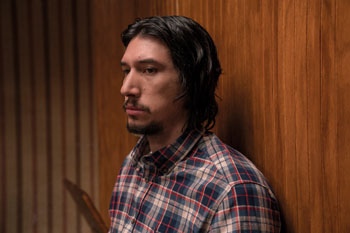 An Incredible True Story Comes To Life
An Incredible True Story Comes To Life
Get ready for some "Fo' Real Fo' Real Shit."
In the mid-1970s, Ron Stallworth broke barriers as The First African-American Detective serving on The Colorado Springs Police Department. A rising star with real potential, Stallworth distinguished himself as an exemplary Detective in his first major undercover assignment, attending a lecture delivered by Black Panther Party Leader Kwame Ture. Soon after, he stumbled across the newspaper ad that would forever change the trajectory of his life. In bold black-and-white was a recruitment message from the Ku Klux Klan, seeking new members. Through a series of daring encounters, Stallworth was invited into the inner circle of the self-described "Organization." He even cultivated a personal relationship with none other than the leader of The Hate Group, David Duke, who never suspected Stallworth's real identity or race.
Decades later, a retired Stallworth detailed his incredible experiences in the 2014 Memoir Black Klansman, relating the jaw-dropping tale of how a Black Cop came to be a card-carrying member of the KKK. Almost immediately, Hollywood began calling with offers to bring his book to the screen. But Stallworth, wisely, was wary, unwilling to allow his life story to fall into the wrong hands. Then came QC Entertainment who acquired the rights to the book, and following a successful partnership on "Get Out" that Jordan Peele's Monkeypaw joined QC's Sean McKittrick and Ray Mansfield to produce the film. All immediately agreed the singular voice of Spike Lee was the one to bring Stallworth's story to the screen. When Jason Blum's Blumhouse joined soon after, the reunited "Get Out" producing team was complete.
Over the course of a remarkable 30-plus year career, Academy Award®-nominated filmmaker Spike Lee has crafted an indelible body of work dating back to his 1986 indie breakthrough She's Gotta Have It. With such films as Do the Right Thing, Malcom X, Inside Man and the four-part documentary When the Levees Broke: A Requiem in Four Acts, Lee has proven himself time and again to be one of America's most original and prolific Writer-Directors. He has built a singular reputation as a formidable, uncompromising creative force whose Art is rooted in truth as well as a tireless, outspoken proponent for Social Justice.
Peele contacted Lee personally to gauge his interest in the project. "Jordan Peele called me up," Lee says. "He wanted to see if I wanted to do it." The Filmmaker was immediately intrigued: "It reminded me of The Dave Chappelle Skit, but this was real," Lee says, referring to a famous sketch in which Chappelle played a Blind Black Man who joins The Klan, not realizing that he isn't white.
"I felt that this movie had so much in common with Spike's work, tonally," Peele says. "It's funny. It's suspenseful. It's powerful. And it exists in this genre space, and at the same time, it's a true story. So, I sent the script to Spike, along with the book. A couple days later, he already knew the script better than I did. The guy is a Master. And since that moment, I've just been kind of in awe with his process and how he works."
Lee turned to University of Kansas Tenured Film Professor and frequent collaborator Kevin Willmott (Chi-Raq) to discuss a take on Stallworth's story and on the early script written by David Rabinowitz and Charlie Wachtel. Through their retelling of Stallworth's dangerous mission to bring down the KKK, they sought to underline the striking connection between Past and Present, highlighting themes that could not be more pertinent to today's world.
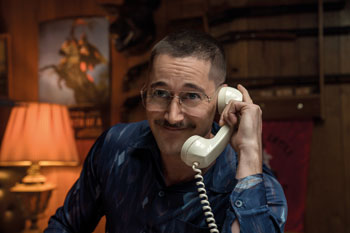 The story might be set in the 1970's, but for Lee and Willmott, BlacKkKlansman was not a period piece. "Kevin and I spoke and we knew what we had to do"we had to make it Contemporary so people could connect it to the Crazy World we all live in today," Lee says.
The story might be set in the 1970's, but for Lee and Willmott, BlacKkKlansman was not a period piece. "Kevin and I spoke and we knew what we had to do"we had to make it Contemporary so people could connect it to the Crazy World we all live in today," Lee says.
By the time the duo flew to L.A. to meet with producers McKittrick, Jason Blum, Ray Mansflied, Peele, and Shaun Redick they knew exactly what they wanted to achieve with The Film, and their vision was the key to unlocking the right way to share Stallworth's story with the world. "It definitely needed a voice, a Filmmaker with perspective which is the very definition of Spike Lee," says McKittrick. "We were always drawn to the power of Ron's story -- the scariest part to me is how relevant it is to what is going on in this country today. Spike and Kevin Willmott gave the script voice," says McKittrick.
"This is the story of a Man going up against the Greatest Hate he sees in Our Country," adds Mansfield. "The nerve that takes"if this story wasn't true, you'd never believe it."
"Ron Stallworth, what he did changed society just a little bit," says Redick. "He had the guts to make a difference."
A Powerful Ensemble Takes Shape
With a greenlight in place, Lee and Willmott began working on their draft of the screenplay, which features both real-life figures and purely fictional characters. In Spike Lee's mind, there was no doubt about who should star as Ron Stallworth: John David Washington, the young actor and former football player whose biggest project to that point was the HBO television series "Ballers." Lee had given Washington his first film project"the actor made his debut at just six years of age alongside father Denzel Washington in Lee's landmark 1992 biopic Malcom X.
Washington says he was elated to get the call about the role from the director he'd so long admired. "Spike Lee has a very unique way of recruiting and pitching stuff," John David Washington says. "It was a phone call, very brief, 'I got a Book for you. Read it.' I was blown away, obviously, just by the fact this really happened, this was a true story. We talked about it a little bit, The Film and what he was thinking about and how he wanted to do it. I mean, this is a guy I've idolized since I was a kid. He gave People of Color, Men and Women, a Voice, a Platform, and he chose me. I was beyond excited and just couldn't wait to get to work."
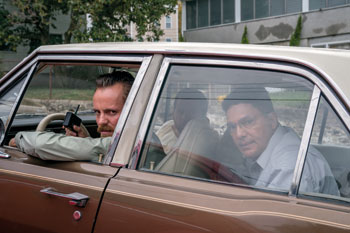 For Flip Zimmerman, the agent who poses as Ron in face-to-face meetings with the KKK, Lee cast Emmy-nominated actor Adam Driver ("Girls," Star Wars: The Last Jedi). Although more experienced than Stallworth in the field, Zimmerman nevertheless finds himself navigating circumstances well outside of his depths in his encounters with virulent racists. Flip's experiences with the members of The Hate Group also prompt him to examine his own relationship to his Jewish heritage. "Coming face to face with pure hatred makes you reassess your values," Driver says. "Whether a personal history is important or not is something that he gets to explore over the course of the movie. That he's more of a self-reflective person I thought was a fun thing to investigate."
For Flip Zimmerman, the agent who poses as Ron in face-to-face meetings with the KKK, Lee cast Emmy-nominated actor Adam Driver ("Girls," Star Wars: The Last Jedi). Although more experienced than Stallworth in the field, Zimmerman nevertheless finds himself navigating circumstances well outside of his depths in his encounters with virulent racists. Flip's experiences with the members of The Hate Group also prompt him to examine his own relationship to his Jewish heritage. "Coming face to face with pure hatred makes you reassess your values," Driver says. "Whether a personal history is important or not is something that he gets to explore over the course of the movie. That he's more of a self-reflective person I thought was a fun thing to investigate."
Topher Grace was cast in the pivotal role of David Duke"someone the actor describes as "one of the worst men in the history of America." Although he was overwhelmed by the opportunity to work with Lee, preparing to play Duke in the film required weeks of studying hateful ideology. "It was the worst month of my life"all I'm doing is watching David Duke and listening to his rhetoric," Grace says. "I listened to his news radio show"which is still on"because throughout the film you hear me doing radio. In a sense, his voice doesn't age, so it's very similar to what it was like in the '70s. I read his autobiography, My Awakening, which is kind of a thinly disguised Mein Kampf. And it's a doorstop. It's a really thick book, and it was so hard to get through."
Grace also watched Duke's early 1980s appearances on episodes of Phil Donahue's talk show. "I noticed that he kept using the phrases 'America First' and 'Make America Great Again,'" Grace says. "It really jumped out because I only heard these phrases for the first time a couple years ago."
As Patrice, a committed Activist and Community Organizer Ron meets during his undercover work, Lee cast actress Laura Harrier (Spider-Man: Homecoming). "I think it's super rare to find a strong woman, especially a strong woman of color, who feels fully rounded and like an actual human being when you read a script," she says. "This was just everything I could have asked for."
Prior to filming, Harrier not only reached out to the Alumni Association at Colorado College about the work the Black Student Union had been performing on campus at the time; but she also read Angela Davis' autobiography and met with Emory University Law professor and former Black Panther Party leader Kathleen Cleaver. "Spike had her over to his house and we all went there and just talked to her and asked her questions about her time in The Panthers and what that experience was like for her, and her relationship with [her Husband and fellow Panther leader] Eldridge [Cleaver]."
BlacKkKlansman features Harry Belafonte, himself an icon of the civil rights movement, in the pivotal role of Jerome Turner. Belafonte says that when Spike Lee spoke to him about the part: "He just said to me, 'Mr. B.,' he said, 'I want you in my movie.' He sent me the part, and it wasn't very big, didn't last very long, but the time that we had was really quite intense. I welcomed the opportunity to be in a Spike Lee movie. When I looked at the film in its entirety, I realized that he'd really touched on a very important subject matter."
From the start, the ensemble understood the responsibility of telling Stallworth's real-life story and communicating the film's timely, topical themes. "I'm very picky with the people who I cast in my films," Lee says. "The number one goal every Film is to get, as best you can, the right people for the roles you have in The Film. Money prevents that sometimes, schedule prevents that sometimes"those factors play a part in casting. But I've been doing this for 30 years, and I will say that this is cast is stellar. The performances are stellar. Everybody knew the film we were making and did what they had to do to do their part whether it was large or small."
 In September of 2017, Lee gathered the actors for two weeks of extensive rehearsals, which kicked off with a table-read of the script. The thorough preparation ensured that production would move swiftly once cameras began to roll. "We had to look at it from all aspects to make it come together," Lee says. "We spent the time. We did what we needed to do with the script so for the most part we wouldn't have to be messing around on the set. We had to get it straight."
In September of 2017, Lee gathered the actors for two weeks of extensive rehearsals, which kicked off with a table-read of the script. The thorough preparation ensured that production would move swiftly once cameras began to roll. "We had to look at it from all aspects to make it come together," Lee says. "We spent the time. We did what we needed to do with the script so for the most part we wouldn't have to be messing around on the set. We had to get it straight."
Stallworth traveled from his home in Texas to New York for the read-through, spending some time with Lee and Willmott but mostly helping to advise young star Washington, addressing any questions the actor had about Stallworth's past. "He was very generous with his information, just the emotions of what was going on during that time, during the investigations, what he looked for, how to be a detective, and the relationships that he established," Washington says. "What was so surprising to me was the amount of support that he received from his department to pursue this case."
Stallworth made himself available to all the actors, giving his full support to the project. He also made it a point to show the cast his KKK membership card, which he carries in his wallet to this day. "David Duke personally prepared that and put it in the mail to me after a phone call with me inquiring, 'Where's my card?'" Stallworth says. "He sent me that card, and I've carried it since January '78 when I got it."
Says Grace: "David Duke and a bunch of different people deny that this ever happened. Well, it happened. I mean, they inducted a Black Man into The Ku Klux Klan, to tell you a little something about these idiots. I just thought it was amazing and kind of symbolic of what his journey was and how amazing a man Ron is."
The Experience Of Making Blackkklansman
BlacKkKlansman began filming in Da People's Republic of Brooklyn, New York, in October 2017, with production stretching into December of that year; the shoot included a short visit to Colorado Springs for some exterior location shooting. Washington says working on The Film felt like traveling back through time"shooting the sequence in which Ron, in his first undercover assignment, is sent to attend a lecture delivered by Kwame Ture that the authorities fear might stoke racial unrest was especially powerful. He says he was mesmerized by the charismatic performance co-star Corey Hawkins delivered as Ture.
"He channeled the Spirit of that Man, Kwame Ture," Washington says of the Straight Outta Compton Actor. "I remember that day. It was this Club environment. Spike had been warming up the crowd, had a real DJ going, spinning records. We were dancing for a good 40 minutes, 45 minutes while they were setting up. Corey was just pacing back and forth. He was in The Zone. And that Brother got up there and delivered. I really felt like I was in Colorado Springs in the '70s, and there's Kwame Ture, speaking to us, addressing us."
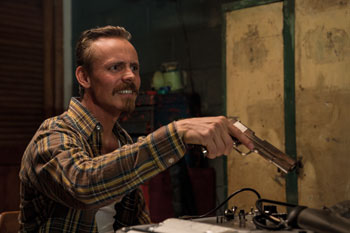 Lee and Willmott combed through classic speeches that had been delivered by Ture (the Trinidad-born activist born Stokely Carmichael) to write Hawkins' monologue. Hawkins says the scene was unusually nerve-wracking to shoot. "It was the first time in a long time that I had been really nervous," he says. "I'm not that Dude. I come on set, I do my work and I'm prepared, so I'm confident. Not that day.
Lee and Willmott combed through classic speeches that had been delivered by Ture (the Trinidad-born activist born Stokely Carmichael) to write Hawkins' monologue. Hawkins says the scene was unusually nerve-wracking to shoot. "It was the first time in a long time that I had been really nervous," he says. "I'm not that Dude. I come on set, I do my work and I'm prepared, so I'm confident. Not that day.
"But the first time I walked out there and I started saying these words, I'm delivering this speech, all of a sudden, there was this kinetic energy in the room," Hawkins continues. "You can hear Spike in the back saying, 'Say it again!' 'Damn right!' The Crowd were hearing the words for the first time, and they heard the words about being shot down like Dogs by Racist Cops and it resonated with them. Once we got through the first pass, I could see Spike was happy. He was proud that we did Kwame's spirit justice."
After that initial assignment, Ron embarks on his own undercover operation, answering a newspaper ad placed by the KKK looking for new recruits and connecting with the leader of the local chapter, Walter Breachway (Ryan Eggold). Unable to meet with him without blowing his cover, Flip Zimmerman agrees to pose as Ron, and together, the two detectives embark on their covert investigation. But they initially come at the mission from very different angles.
"Flip starts The Movie with a very work-based MO where there's nothing personal about it"the ends justify the means to getting the job done," Driver says. "He kind of blanches at Ron's personal commitment to it. It doesn't really make sense to him. But then as time goes on, he can't help but be personally invested."
On screen, Ron and Flip share an undeniable rapport rooted in something much deeper than standard buddy-cop tropes. "We dealt with real issues between them, not the procedural kind of stuff you see in Police Movies," Willmott says. "Ron is having to deal with all this racial language that he's having to hear over the phone from the Klan. When he finds out that Flip is Jewish and has not really acknowledged his ethnic background, that becomes really a link between the two of them."
The characters' bond reflected the real-life relationship between Washington and Driver, Lee says. "That happened really in rehearsal," the Director says. "That didn't just start showing up on set. That happened in rehearsal. They had a good vibe and you see it on screen."
"He is mMister focused," Washington says of Driver. "He is so intense. If you're lying in the scene, if you have any false moments, he'll know. You gotta be truthful the whole time. He pushed me as an Artist to not skip any steps, to keep the rhythm, to be present with him and the elements of what's going on. He's just a Good Dude, Man, and I admire how he works, his work ethic, how professional he was. It was just an honor and a privilege to be able to tell a story with him for sure."
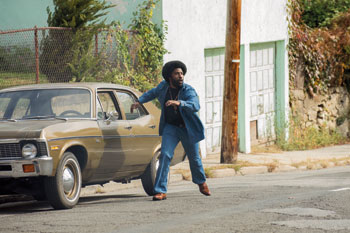 As the investigation continues, Stallworth finds himself speaking via phone to David Duke, who has hit upon a new strategy to expand the Klan's appeal, sanitizing the group's image hateful rhetoric into something that sounds less overtly offensive on its face. "In the '70s, there had been a perception of racists, maybe they had beer bellies, they were good old Southern boys," Grace says. "David, he's very media friendly and very intelligent. He always wears a three-piece suit. He changed that perception of racism at the time to what it is today."
As the investigation continues, Stallworth finds himself speaking via phone to David Duke, who has hit upon a new strategy to expand the Klan's appeal, sanitizing the group's image hateful rhetoric into something that sounds less overtly offensive on its face. "In the '70s, there had been a perception of racists, maybe they had beer bellies, they were good old Southern boys," Grace says. "David, he's very media friendly and very intelligent. He always wears a three-piece suit. He changed that perception of racism at the time to what it is today."
The exchanges between Stallworth and Duke are so shocking they're almost comical"the screenplay's disarming use of humor struck Grace as ingenious. "Something that was so interesting about reading the script and then being on set was that the tone was different than I would've thought," Grace says. "Usually when you make a film like this, it's very somber because the subject matter is very somber. But something that's brilliant about Spike and brilliant about Jordan Peele is that they understand how seductive humor is. It actually brings more people into a story."
Although BlacKkKlansman is in no way a comedy, Lee and Willmott intuitively understood that humor would need to be woven into the fabric of the story to help relieve some of the incredible tension on screen. "The only real note Jordan Peele gave us was, 'Make it funny,'" Willmott says. "The thing that we try to do on the film is examine these heavy issues"race and hate groups and the Klan and the whole legacy of the horrible things they've done in this country. You've gotta find a way to make it entertaining. The fact that Ron was able to infiltrate the Klan the way he did"that's where the humor comes from, from revealing the absurdity of it all."
Adds Lee: "The Motherfucking Ku Klux Klan is absurd. The Motherfucking Alternate Right is absurd. The Motherfucking Neo-Nazis, they're absurd, too, so you bring absurdity into the movie."
The levity was needed to help the actors work through harrowing scenes in which they were often called upon to deliver line after line of the most extreme hate speech imaginable. "John David Washington would definitely try to keep it light while we were shooting," says producer Shaun Redick. "For stress relief, he'd do karate moves. Spike left that in the movie. That's him in between scenes, when he starts throwing punches and he kind of realigns himself, it's his method. John David uses martial arts to reset himself, to relax."
"Spike, he really trusted me, you know, and I trusted the process," Washington adds. "It was great to discover things with Adam, with Laura, with Topher. It just came so fluidly. It came so naturally, the things that were happening. That you can't prepare for, but the confidence was rooted in the preparation. The kind of confidence that I gained as an actor, he's responsible for. It's beyond measure."
Grace admits he found it difficult to portray a man as loathsome as Duke"a KKK initiation scene in which a Crowd gleefully cheers during a screening of 1915's The Birth of a Nation was especially harrowing. But he says Lee was an invaluable source of support. 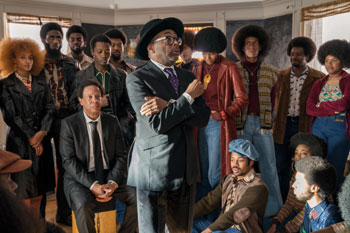 "There were a couple days on set, I had to take a moment and just detox"it felt so horrible and oppressive and wrong," the actor says. "What's so great about Spike Lee, he would come over and just say, 'Hey, man, don't worry. This is a terrible day. I'm not enjoying myself, but it's in service of something I'm trying to say.' He really made me feel as comfortable as you can, saying those words and doing those things."
"There were a couple days on set, I had to take a moment and just detox"it felt so horrible and oppressive and wrong," the actor says. "What's so great about Spike Lee, he would come over and just say, 'Hey, man, don't worry. This is a terrible day. I'm not enjoying myself, but it's in service of something I'm trying to say.' He really made me feel as comfortable as you can, saying those words and doing those things."
"Spike Lee has made his career confronting these issues publicly and on a worldwide scale," adds producer Raymond Mansfield. "I don't think there are many people out there who have the experience, the persona, the personal character to command a set like that. It was a remarkable set to be on every day. He's not walking on egg shells. He's taking all his activism, everything he's learned, and putting it into this great film."
Asked if the film's subject matter took any sort of emotional toll, Lee offers an emphatic, "No." The work was all in service of telling a powerful and necessary story. "The emotional toll is doing The Oscar Nominated Documentary 4 Little Girls where that's something that happened for real," he says. "[Making a film about] the bombing of the 16th Street Baptist Church, and I have to interview the Parents of The Little Girls who lost their lives in that Terrorist Attack, now that took a toll."
BlacKkKlansman boasts scenes of dynamic verve and swagger, triumph and heartbreak, but one of the film's most profound moments involves Harry Belafonte as Jerome Turner recounting the True Story to the members of Patrice's student union his first-person recollections of the lynching of Jesse Washington he witnessed as a young man. Bracing to hear and beautifully conveyed by Belafonte, the scenes offer a palpable reminder of the unspeakable horrors perpetrated by KKK. "It was a way to make the Klan real," Willmott says.
Belafonte's day on set was the last day of filming, and Lee asked his Crew to dress in tuxedos to honor the living legend. "That was just the most epic way to end it," says Harrier. "I mean, he's this Icon of the Civil Rights Movement. I just couldn't believe it was him. I don't think anyone was really acting in the room. We were all so genuinely moved. I feel so honored to have met him and worked with him."
It's Not About The Past"This Is A Film For Right Now
In 1989, Spike Lee took the Cannes Film Festival by storm with Do the Right Thing. This May, the director did it again when BlacKkKlansman made its World Premiere as one of only two American titles In Competition and went on to claim the prestigious Grand Jury Prize. The film was hailed as an electrifying true-life tale that celebrates the accomplishments of one truly remarkable man and a powerful indictment of the resurgent white supremacist ideals flourishing in America under the current administration. The relevance of Ron Stallworth's story was unmistakable.
"The subject matter is timeless," Washington says. "We're still fighting the same stuff today. I guess that's why it was such a relief and a surprise and a joy to know that Men and Women of all Colors in that Department were working with Ron to accomplish his goal. If they were doing that in Colorado Springs in the mid-'70s, then we can do it now, today. This is Us, this is Human Behavior right here we're watching. This isn't Fiction."
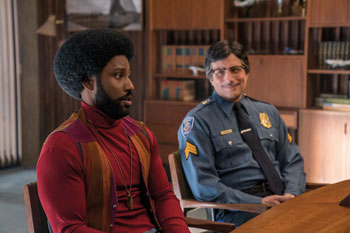 Adds Peele: "I feel like we're living at a time where pieces of this Country have lost touch with who The Good Guys and The Bad Guys are. Nazism, White Supremacy, the Klan, are The Bad Guys. They're Hate Groups. And we seem to be at a point where The President of The United States is calling out good people on both sides of what should be a clear polarity. This Movie, it's not only a crowd pleaser, but it's something that we can all go and experience that helps reset our moral compass when it comes to Racism and White Supremacy in this Country."
Adds Peele: "I feel like we're living at a time where pieces of this Country have lost touch with who The Good Guys and The Bad Guys are. Nazism, White Supremacy, the Klan, are The Bad Guys. They're Hate Groups. And we seem to be at a point where The President of The United States is calling out good people on both sides of what should be a clear polarity. This Movie, it's not only a crowd pleaser, but it's something that we can all go and experience that helps reset our moral compass when it comes to Racism and White Supremacy in this Country."
To further underscore the Film's topicality, BlacKkKlansman will open in U.S. theaters Aug. 10, a date chosen to coincide with The One-Year Anniversary of The White Nationalist Rallies in Charlottesville, Virginia that claimed the life of Counter-Protester Heather Heyer. Audiences surely will be entertained by Stallworth's inspirational life-story"but the film also just might encourage some viewers to undertake the good fight.
"Like Malcolm X once said, 'We must make the struggle using anything at our disposal to survive,'" says Harry Belafonte. "Only through Art and only through The Power of Cinema and The Power of Literature can people be informed because most of White America doesn't spend time lingering on the plight of Black America. They're too busy trying to survive and enjoy the privileges that they have worked for. But I don't think there can be any harmony to our existence in what we are as a Nation until we pay full attention to this injustice that's going on with Millions of its Citizens."
Offers Lee: "This Film is an examination of The World we live in. This Film is an examination where there's a Cultural Battle of Love versus Hate like The Knuckle Rings that Radio Raheem wore in Do the Right Thing, which came from the Tattoos Robert Mitchum had on his fingers in Night of the Hunter. Love versus Hate. You cross your fingers and hope and pray that people connect with it when it opens nationwide Aug. 10."
About The Production
From Production Design to Art Direction, Camerawork to Costume Design, every effort was made to recreate the details of the era. The 1970's aesthetic also influenced the overall look of the film, with Cinematographer Chayse Irvin shooting on classic 35mm stock and drawing inspiration from such classics of the period as The French Connection. But when developing certain shots or sequences, both Lee and Irvin embraced a spirit of iImprovisation"mixing formats and approaches to create a more experimental, more contemporary feel. (A bracing black-and-white segment featuring Alec Baldwin as a vile bigot spewing racist invective was shot on Ektachrome during Pre-Production.)
"I never want The Director or Myself or The Actors to feel really boxed in by a particular idea," Irvin says. "We were kind of feeling things out. We started reacting to things as they were developing, especially off the actors, feeding off that energy."
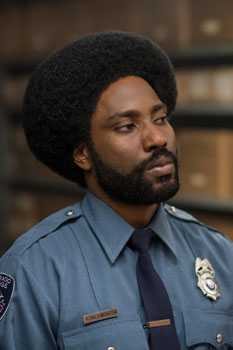 The approach of marrying 35mm film with Super 16 video, GoPro and other formats was one that had worked well for Irvin in his projects with the visual artist Kahil Joseph including Beyoncé's Epic Video Album Lemonade, and one that the Cinematographer credits Lee with pioneering. "He was doing that back in the day, too, with Malcolm X and Clockers," Irvin says. "He was playing with a lot of different processes."
The approach of marrying 35mm film with Super 16 video, GoPro and other formats was one that had worked well for Irvin in his projects with the visual artist Kahil Joseph including Beyoncé's Epic Video Album Lemonade, and one that the Cinematographer credits Lee with pioneering. "He was doing that back in the day, too, with Malcolm X and Clockers," Irvin says. "He was playing with a lot of different processes."
Production designer Curt Beech sought to highlight the different worlds of the film visually while at the same time using the sets and environments to underline the themes at work in the script. Ron's apartment was hip, progressive and cool, while Felix's house"the home of the character played by Jasper Pääkkönen that routinely hosts local Klan meetings"was rooted entirely in the past. "I thought it was important to show the Klan members not as a bunch of backroom rednecks but as the people next door," says Beech, who previously worked with Spike Lee on his Netflix series, "She's Gotta Have It." "The living room should be pretty nice, a place that seems fairly comfortable and ordinary, but at the same time dated and that the ideas that are shared there are dated and outmoded. These are not the ideas of the future."
The Police Precinct where Ron worked hovered somewhere in between, Beech says. The basic design dates to the 1950's, but the place is now worse for the wear, covered in tobacco stains. "It's this slightly older space that is a little outdated and in need of a facelift, both physically and conceptually," he says. "They need to rethink their policing and who they're hiring."
Both Ron's apartment and Felix's house were practical locations"Ron's home was found in Brooklyn, while Felix's residence was located upstate in Ossining, New York, the same town that doubled in certain scenes for downtown Colorado Springs. Beech and his team sourced authentic vintage furniture for both homes as well as equipment for Felix's basement print shop. "That basement is a pretty well-organized nerve center for the organization," Beech says. "It was a place where they were producing literature, sending word out. If it were today, it would be very modern, almost Mission: Impossible-style, so scary and well-funded. I was after the 1970s version of that."
The Precinct was outfitted with period-appropriate props from the desks and chairs to the typewriters and ashtrays"even the pencil holders. Tellingly, Ron's desk is somewhat smaller than all the others and positioned in the far corner so that the other officers' backs face him. "It was a very purposeful arrangement to ostracize him from the rest of The Cops," Beech says.
In terms of color, Beech opted for a more muted palette of neutral browns, dark greens and dark reds, so that the white of the Klan robes would stand out in stark contrast. It was a decision he arrived at in concert with Costume Designer Marci Rodgers, who also previously worked with Lee on "She's Gotta Have It"; The Department Heads wanted to ensure that Washington as Ron would be noticeable and distinct in every scene, so his costumes became just a bit brighter than those worn by the people around him.
For her part, Rodgers began preparing for BlacKkKlansman by watching both Birth of a Nation and Gone with the Wind. Her research also took her to the Library of Congress and to Howard University"her Alma Mater and The Alma Mater of Kwame Ture"where she reviewed historical documents and periodicals from the era.
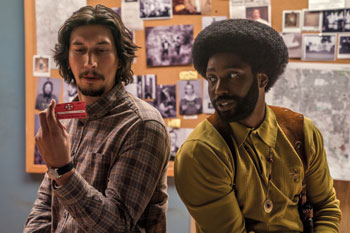 "It was interesting to go through those archives and see his journals"at that point, he was Stokely Carmichael. He hadn't gone to Africa," Rodgers says. "Even to see that change and that transition within these documents [was useful]. Then also I was able to look at archival Ebony Magazines, Jet Magazines. I was just going through every book within that era, taking pictures and really looking at what people wore, even the hair accessories. The accoutrements were really a thing back then. It was really about the jewelry, like the beads, the necklaces, things like that."
"It was interesting to go through those archives and see his journals"at that point, he was Stokely Carmichael. He hadn't gone to Africa," Rodgers says. "Even to see that change and that transition within these documents [was useful]. Then also I was able to look at archival Ebony Magazines, Jet Magazines. I was just going through every book within that era, taking pictures and really looking at what people wore, even the hair accessories. The accoutrements were really a thing back then. It was really about the jewelry, like the beads, the necklaces, things like that."
To dress Topher Grace as David Duke, Rodgers reviewed archival photos of the Klan Leader, taking note of certain telling details. "I noticed that David Duke, he wore fat ties or stripes," she says. Historical images of such Black Power icons as Angela Davis and Kathleen Cleaver directly inspired Patrice's look: "At the time, The Women kinda had a uniform that were a part of that movement," Rodgers says.
Actress Laura Harrier says that the costume was vital in helping her feel comfortable as the young intellectual. "I've always wanted to do a movie in the '70's," Harrier says. "I've always loved The Clothes and The Music and Films, and it was really important, too, in finding the character. Once I put on that Afro Wig and had The Black Leather Jacket and had The Glasses, she just kind of dropped into me. It was really instrumental in making Patrice for sure."
BlacKkKlansman
Release Date: August 16th, 2018
MORE



